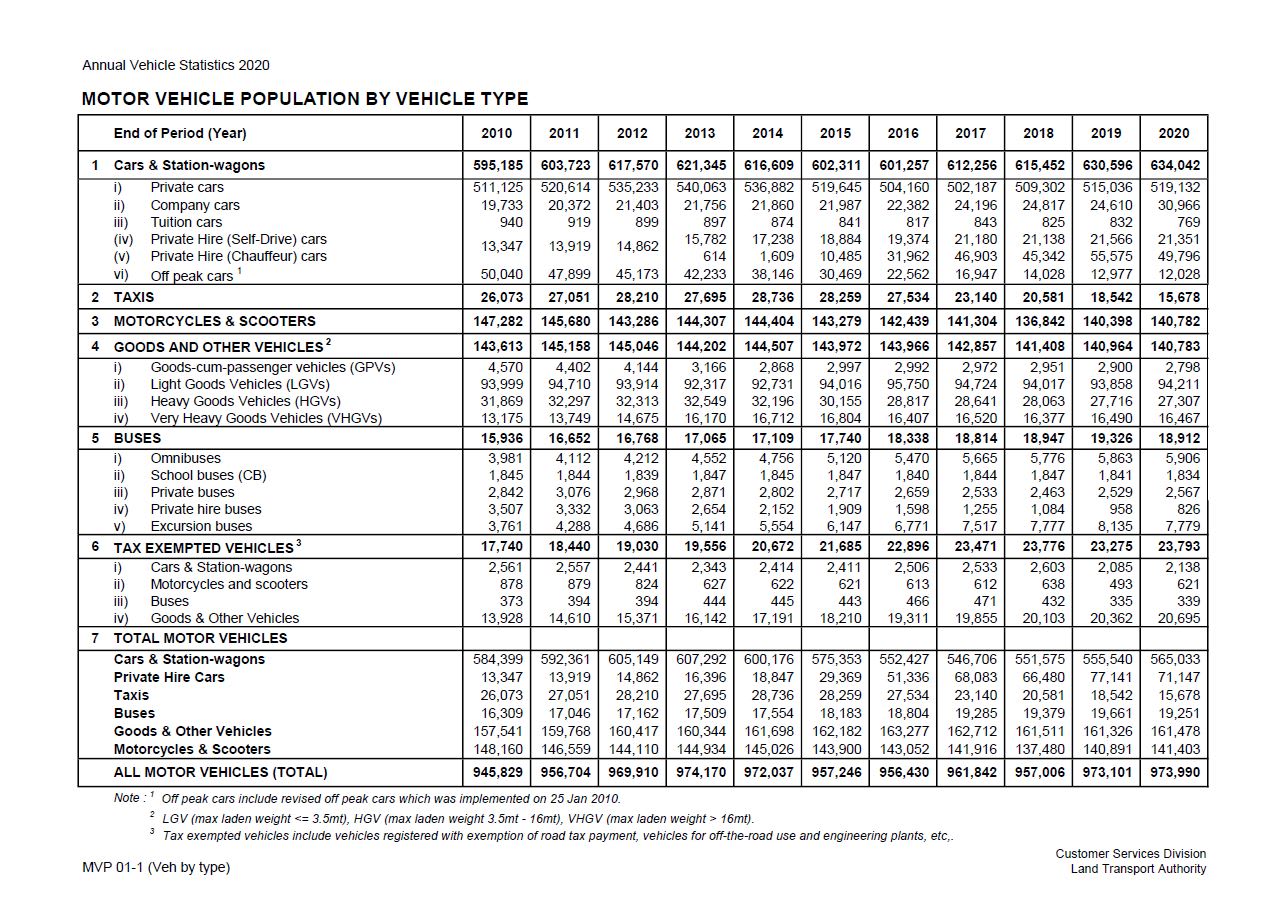The Big Read: More people buying cars amid pandemic, even as those who own them are driving less
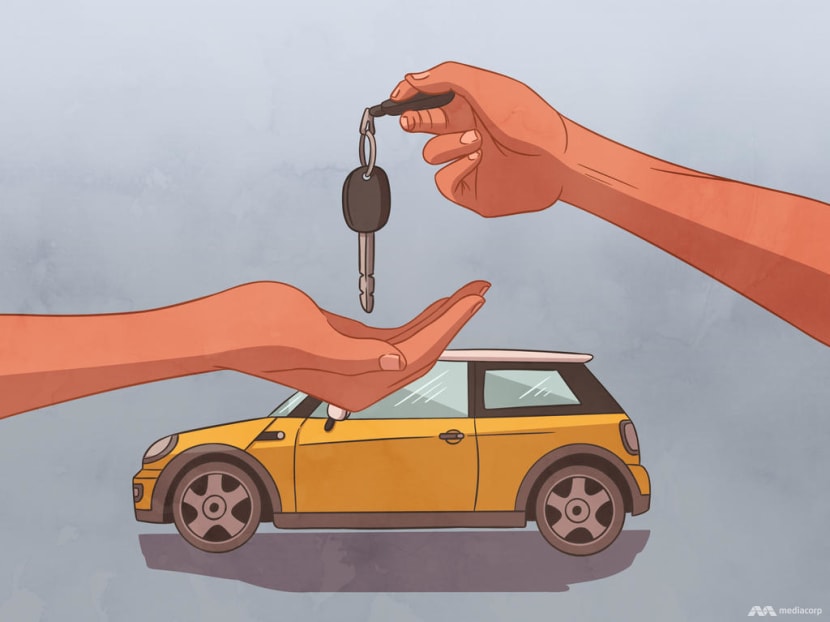
Car dealers said that except for the period when Singapore was in partial lockdown last year, the demand for cars has remained strong amid the pandemic. (Image: TODAY/Anam Musta’ein)
- Car owners here have generally been clocking lower mileage since COVID-19 made remote working the norm.
- But demand for cars — long seen as status symbols — remains robust, as evidenced by high COE premiums and growing private car ownership.
- One car broker describes it as a “strange” phenomenon, with car sales and prices continuing to head north.
- Experts say COVID-19 has caused much disruption to travel patterns and forced a relook of tested transport strategies.
- The demand for cars may not bode well for Singapore’s car-lite ambition, though improving public transport and exploring alternative mobility devices are just as key, they say.
SINGAPORE: Auditor Kong Kian Siong, 41, used to drive to work daily but since the COVID-19 pandemic hit almost two years ago, he has been working mostly from home and only sometimes returns to the office.
With his children’s tuition lessons having gone hybrid now — with some sessions being conducted online — he also uses the car less frequently to send them for classes.
Like Mr Kong, many working adults in Singapore have been cutting down their car use since COVID-19 made remote work the norm, especially during periods of a spike in infections.
Out of 10 car owners spoken to over the past week, all but one said that their weekly mileage has been reduced, even though some may be making more short trips to run errands.
Traffic congestion at major roads also appears to have eased. Electronic Road Pricing rates, which are adjusted to manage the traffic situation during peak hours, are now charged at 12 gantries compared to 77 gantries pre-pandemic. The most expensive gantry now charges S$3, down from S$6 before COVID-19.
With daily COVID-19 cases in the thousands in recent weeks, some people have also been reducing their time outside.
Ms Foong Har, who used to drive to work daily but is now working from home, said that she now hardly uses her car on weekdays.
“I want to cut down on how often I go out now because of the COVID situation,” said the 46-year-old who works in e-commerce.
With fewer people travelling to office daily, ridership on public transport as well as taxis and private-hire cars has taken a big hit.
But while the pandemic is keeping people off the streets and the roads, it doesn’t seem to have put a damper on Singaporeans’ long-running love affair with cars: Demand for cars — long seen as status symbols here — still seems to be as high, if not higher, than before COVID-19 hit Singapore’s shores in late-January last year, according to car dealers interviewed.
At CarBiz, car sales have gone up by about 20 per cent to 30 per cent since June last year, following the end of the two-month circuit breaker here. Prices of Certificates of Entitlement (COEs), for the right to own and use a vehicle, have soared to multi-year highs.

Over the course of the pandemic, the car population (excluding private hire cars and taxis) had risen by almost 4 per cent at the start of last year to about 577,000 by the end of September this year, based on latest available data from the Land Transport Authority (LTA).
Experts around the world had earlier predicted that the pandemic would reshape urban travel patterns in cities as employees return to the offices less frequently for work. The post-COVID-19 transport landscape scenarios include having fewer cars on the road as more people embrace walking and cycling for their commute.
In Singapore’s case, transport analysts said it is hard to tell whether car usage here has altered significantly, and whether commuters will begin returning to the roads en masse once COVID-19 restrictions are completely lifted.
But with the large disruption to travel patterns caused by the pandemic, it may be worth relooking at Singapore’s transport strategies — which include its vision to be a car-lite nation — as the economy gradually reopens, they said.
PANDEMIC’S IMPACT ON PUBLIC TRANSPORT, CAR USAGE
The tightened movement restrictions last year saw bus and train ridership falling to their lowest levels in more than a decade.
Bus ridership fell 30 per cent to 2.88 million rides a day on average for 2020, the lowest since 2006. MRT ridership dropped 40 per cent to 2.02 million rides a day, the lowest since 2009.
In September, Transport Minister S Iswaran told reporters that public transport ridership was at about 60 per cent of pre-pandemic levels.
Rides on taxi and private-hire cars had also fallen from 772,000 daily trips in 2019 on average to 516,000 in 2020, LTA data showed.
Architect Jin Sung, 52, said that because of the lack of safe distancing on public transport, he had considered buying a second car for his wife, who is self-employed in the culinary business, so that she does not have to be in close contact with other commuters as often. He decided against getting another car after reassessing the family’s needs.
Barring periods of tightened restrictions, such as during last year’s circuit breaker, Mr Jin generally uses his car as often as he used to before the pandemic for meetings and to commute to his office.
For others who have been mostly working from home over the past two years, some have found themselves using their car more frequently despite not needing to travel for work.
One car owner, 38-year-old IT professional Mark, who wanted to be identified only by his first name, said while he has been spending less time on the road now, he takes more frequent drives to buy food or fetch his children from school.
Associate Professor Walter Theseira from the Singapore University of Social Sciences said that although there is little data on individual travel patterns, the low ERP prices indicate that the overall car usage has been down significantly during peak periods.
“However, the data also suggest that as COVID-19 restrictions are lifted, people have been quite eager to return to the road.”
Excise tax for petrol revenue collected for the last two months of 2020 was at comparable levels with that of 2019, reflecting similar consumption levels, he said.
While people are driving less for work, they may be using the car more often for personal reasons during the work week outside of peak periods, Assoc Prof Theseira suggested.
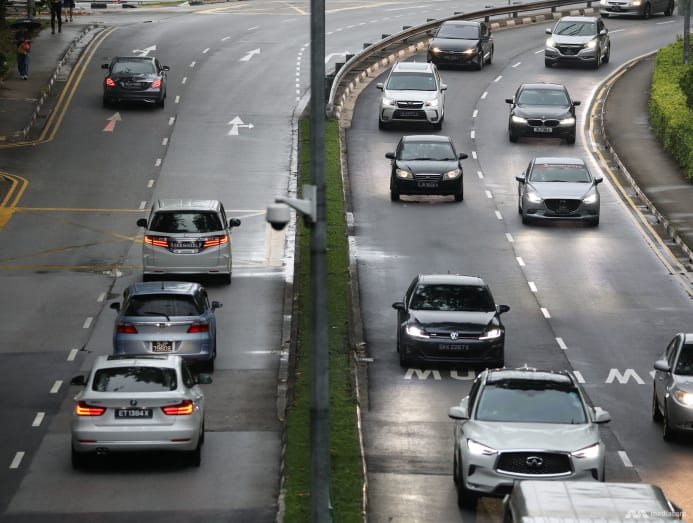
In many cities around the world, including London and New York City, public transport ridership has similarly plummeted during the pandemic. At the same time, people are also relying on their cars more than before, some international reports have suggested.
An annual study by automotive-services company RAC in November last year found that out of 3,000 drivers surveyed in the United Kingdom, 57 per cent said that having access to a car was more important than it was before the pandemic.
“The pandemic risks putting efforts to encourage drivers out of their cars for some trips back by years,” said RAC’s data insight spokesperson Rod Dennis. “Now, for the first time since 2002, we have fewer drivers than ever saying they’re prepared to use public transport even if services improved — underlining just what a huge role the car continues to play in 2020.”
A survey of 26,000 people from 25 countries by the YouGov-Cambridge Globalism Project and designed with the Guardian newspaper last year found that the majority of people said that they would use their car more than before the pandemic. This trend was apparent in all the countries in the survey and most pronounced in Brazil and South Africa.
CONTINUED ROBUST DEMAND FOR PRIVATE CAR OWNERSHIP
A similar situation playing out in Singapore may not bode well for the country’s ambition to reduce its reliance on cars.
For years, the Government has been pushing for a “car-lite” island, with Prime Minister Lee Hsien Loong unveiling the Sustainable Singapore Blueprint in 2014 — a S$1.5 billion, 15-year plan for the nation to move towards more sustainable modes of transport.
A landmark policy was also introduced in 2018 to freeze the growth rate for cars and motorcycles under the COE system, which was meant to last until January this year but was extended until 2025.
The only exception is for vehicles under Category C — which comprises goods vehicles and buses — which is allowed to maintain a 0.25 per cent population growth.
Data from LTA showed that the car population had fallen from about 607,000 in 2013 to a low of 547,000 in 2017. Since then, that figure has been consistently on the rise every year.
Even as the pandemic raged, the car population — which excludes taxis and private-hire cars — grew from about 556,000 in January last year to 577,000 as of September this year.
Correspondingly, the number of private-hire cars and taxis had gone down, with private-hire cars falling from about 77,700 to 68,400 over the same period, and taxis falling from about 18,500 to 15,400. The figures partly reflect the immense strain that the transport sector is facing after more than a year of closed borders and community restrictions, which have meant fewer customers and earnings.
Despite the cap on vehicle population growth, Assoc Prof Theseira said that there may be year-to-year fluctuations in the total vehicle population because of the way the COE system works.
Since buyers can hold on to an issued COE for six months before registering for a vehicle, there is some lag between COE issuance and actual motor vehicle registrations. There is also some lag between vehicle deregistrations and the COE being recycled back into the system, which takes place over three months.
In response to queries, an LTA spokesperson said that between 2013 and 2016, there was an overall fall in total vehicle population as there was a rising trend of deregistration for Categories A and B, which comprise cars up to and above 1600cc or 97kW respectively.
After 2016, however, the deregistration trend reversed and began falling each quarter, leading to a rise in total vehicle population even though the total vehicle growth rate for cars was frozen.
“It is expected that the lag effect will even out over time,” the spokesperson said. “This can be seen from the fact that although the 2020 vehicle population is higher than 2018, it is still less than the population in 2013.”
The spokesperson added that another contributing factor to the rise in the private car population is that COEs for Category E (Open category) are often used to register cars in Categories A and B.
Instead of focusing on car numbers, Assoc Prof Theseira said that a better indication of demand would be to look at people’s willingness to pay for COEs and recent prices indicate that there is “robust demand for private car ownership”.
Since February last year, COE prices for Categories A and B have trended upwards and in recent months, surged.
The COE price for Category A cars rose from S$30,010 in early February last year to S$53,709 in the latest bidding exercise on Wednesday (Nov 3). Meanwhile, the COE price for the larger Category B cars more than doubled from S$30,890 to S$82,801 over the same period — the highest since 2014.
Transport engineering consultant Gopinath Menon pointed out that there will always be a segment of the population who want to own cars and are prepared to pay high prices for them.
“They have a variety of reasons such as greater comfort, greater convenience especially for social trips and when they have a young family, public health in times of pandemic and prestige,” he said.
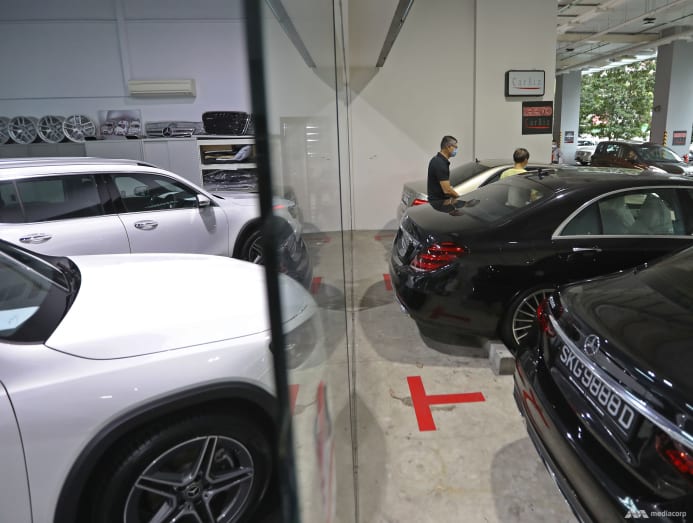
Car dealers said that except for the period when Singapore was in partial lockdown last year, the demand for cars has remained strong amid the pandemic.
Car broker Steven Lim, 54, said that his car sales are still very much the same as before the pandemic.
“The world economy was slowing down even before the pandemic, but strangely in Singapore, car prices and COE are going up,” he said.
In 2019, a three-year-old Honda Vezel used to depreciate in value by about S$8,000 per year, he said. That same car now has a depreciation of about S$10,000 a year.
Mr Adrian Ang, director of Star Deals Gallery, said the number of enquiries he had been getting had fallen by about half in the last two to three months — but mainly due to the surge in COE prices. Before that, he had been getting the same number of enquiries as before the pandemic.
While the pandemic may have forced a change in commuting patterns, people seem to be buying cars for the same old reasons. Three car dealers said their buyers over the past two years were usually young families or existing car owners wanting an upgrade.
Only Mr Lim said he had a client who was considering buying a car to avoid the crowds on public transport, but the latter eventually backed out.
Mr Abel Eng, general manager of CarBiz, said that during the pandemic, his car sales have shifted towards luxury brands such as Mercedes Benz, Audi and BMW, as customers who buy these cars are the ones who can afford the high COE prices.
“People are buying, sales are moving,” he said. “The fact that people can’t spend money travelling overseas plays a part in them buying their next toy locally.”
EV FAD PARTLY FUELING DEMAND FOR CARS?
Over the past year, the car market has seen a shake-up following the entrance of electric carmaker Tesla into Singapore.
The number of new Teslas registered here surged in a matter of months — from 30 in the first half of the year to 487 in the third quarter. It became the sixth-most popular car brand in September, outselling Nissan, Audi and Kia.
Mr George Foo, an executive at a digital marketing agency, was among the many Tesla fans who ordered their Model 3s on the same day Tesla launched its sales portal here in February.
His car arrived in September, and he got it after trading in his Lexus GS Turbo 200.
“With the Government pushing for electric vehicles, I want to be an early adopter,” he said.
How do electric vehicles fit with a car-lite future in Singapore? What role then for hybrid vehicles? CNA's Heart of the Matter drills into these questions:
After about a decade of the Government adopting a start-stop approach to the mass adoption of electromobility here, Deputy Prime Minister Heng Swee Keat, who was then Finance Minister, announced last year that the Government is placing a significant bet on electric vehicles (EVs) and aims to phase out all internal combustion engine vehicles by 2040.
Earlier this year, the Government launched an ambitious goal to build 60,000 EV charging points and announced a requirement for all newly registered cars to be of cleaner energy models by 2030.
Mr Heng also announced in his Budget speech this year that Singapore will set aside S$30 million over the next five years for EV-related initiatives, including measures to improve charging provision at private premises.
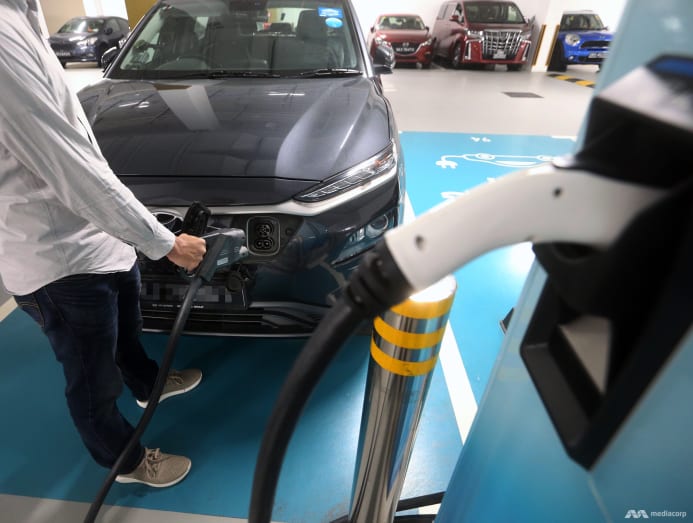
Under the vehicle emissions scheme and the EV early adoption incentive, an electric car buyer may receive as much as S$45,000 in tax breaks.
Since switching to an electric car, Mr Foo has also been saving on petrol costs. A full charge at a public charging point beside his office costs about S$20, he said. He intends to install a charger at his home soon, which would bring the cost down to about S$6.
Assoc Prof Theseira said that he does not think that the EV incentives are the best way to go for most governments because such grants have invariably benefited higher-income consumers who can afford new, higher-end vehicles which make up the bulk of the EV market at present.
“Nonetheless, the EV grants do serve one useful purpose — they help to deliver price parity between EVs and comparable internal combustion engine vehicles, without which the market can't shift over to EVs,” he said.
He believes that policymakers should continue to “ensure that transport is taxed or priced according to the environmental and external harms it causes”.
He said: “Thus, EVs should continue to be taxed and charged for driving and congestion, since they still cause more environmental harm than public transport.”
THOSE WHO BOUGHT THEIR FIRST CARS AMID THE PANDEMIC
While the pandemic, which has resulted in job losses or reduced incomes, has led many to rethink their finances, it has not dissuaded some from getting their first car.
Mr Nicolas Mok, 25, became a car owner in June, not long after he graduated from university.
As the co-founder of Belly Empire, a business that funds and helps food establishments in their expansion, he used to take an average of six private-hire rides a day which cost him about S$90. In a day, he would often need to travel to the office, then to the food outlet and to meeting with clients.
Sometimes, he would also have to make a trip to a shop to get equipment or supplies for the outlet.
So, he found that the S$26,000 he paid for an eight-year-old Hyundai Elantra was reasonable.
“It's definitely still a bit more expensive when you have a car after you add the road tax and petrol, and other costs. But overall, I think it's quite affordable for the added convenience,” Mr Mok said.
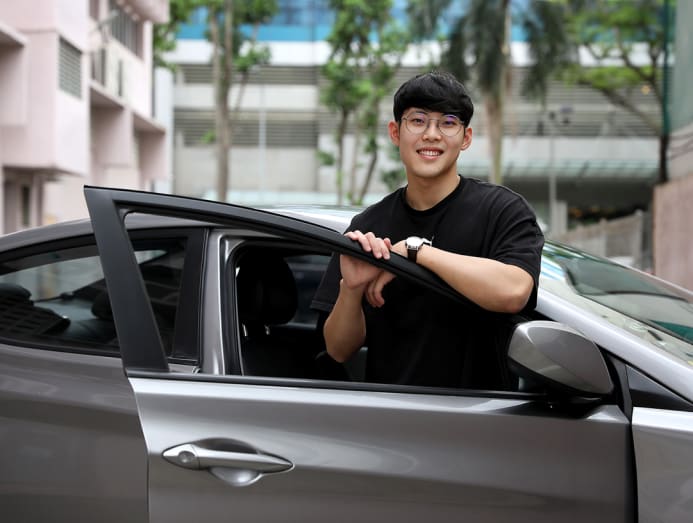
Property agent Lim Ngee Siong, 26, bought his first car after saving up for a year. In March last year, he bought a 14-year-old Porsche Boxster which cost him S$73,000, when prices of the cars which he was eyeing dropped briefly by about S$10,000 at the start of the COVID-19 outbreak.
At the time, he had to hit 10 different locations in a day for property viewings and travelled mostly by bus or train.
As his appointments became more packed, he started taking more private-hire car rides. But he still encountered occasions where his driver could not find the pick-up point and cancelled his ride order.
With a car, he can get to different locations faster and also uses it often as a comfortable place to have video-conferences in between viewings.
“I can now schedule more viewings in a day and have more time to spend with my family,” said Mr Lim.

Related:
Insurance agent Natalie, who just turned 30, bought her first car two months ago, a S$70,000 BMW 116D diesel car with about six years left to its 10-year COE cycle.
Natalie, who wanted to be known only by her first name, said it is now easier for her when travelling to meet her clients, which she does about two to three times a day.
“Running on diesel is not very environmentally friendly, but it’s very cost efficient,” she said.
A full tank costs about S$90 and lasts for up to 800km.
Another reason she bought the car is that her parents, aged 66 and 67, are getting old and she wants to be able to bring them around for family walks with the dog.
In land-scarce Singapore, where roads take up about 12 per cent of the land, owning a car has long been an expensive affair as the Government seeks to limit the number of vehicles through measures such as the COE quota system.
What would it take for the new car owners to give up their cars?
Natalie said she might reconsider if she has a career switch and has to work in an office in town where season parking fees can cost up to S$400 a month.
Mr Lim said that he would willingly give up his car if he has a job where he can work from home.
“I will just sell it and take a Grab (private-hire ride) when I need to. It’s possible,” he added.
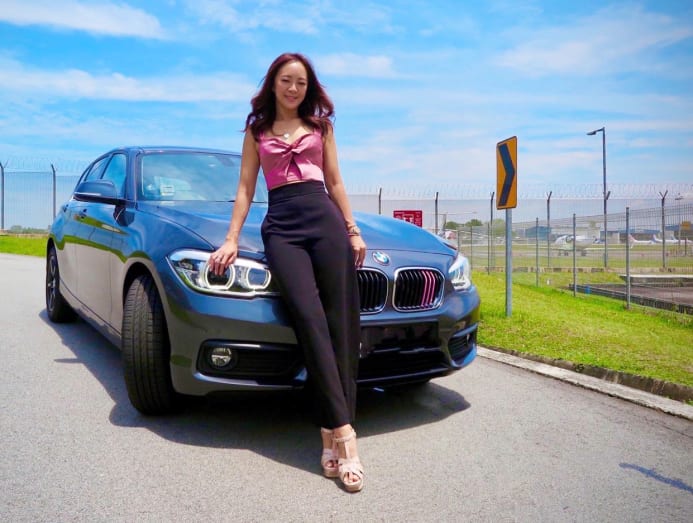
TAKING STOCK OF SINGAPORE’S CAR-LITE AMBITION
While the private car population has indeed risen during the pandemic due to the various factors at play affecting the COE quotas, experts stressed that the zero-growth policy means that the number of private cars will eventually level off.
The number of licences available for cars has already been declining, said transport analyst Terence Fan from the Singapore Management University.
The COE quota for November 2021 to January 2022 has been set at 10,590 — the lowest in more than seven years.
LTA also said last month, when announcing the extension of the vehicle zero-growth rate policy, that the extension is not expected to significantly affect the supply of COEs, since the COE quota is determined largely by the number of vehicle deregistrations.
Beyond managing car ownership, Singapore’s push towards a car-lite society also entails improving and expanding the public transport system as well as providing alternative means of transport, the experts said.
One such transport mode is personal mobility devices (PMDs), such as electric scooters, which were originally envisaged as a means of first-and-last mile travel to and from MRT stations and bus stops.
What policymakers had not expected, however, was the spate of accidents — including three fatal ones — that would occur because of the widespread popularity of the e-scooters. As a result, the authorities banned e-scooters from all footpaths in late 2019, limiting them to cycling paths and park connector networks. The footpath ban was later extended to include other motorised PMDs, such as hoverboards and electric skateboards.
Despite the public’s negative perception towards electric PMDs, urban transport expert Tham Chen Munn said that Singapore has the opportunity to accelerate its car-lite vision by embracing these devices. These devices could be in the form of modern electric bicycles, which have shown themselves to be less accident prone than e-scooters in other cities.
“Once you accept electric bicycles into the equation, it’s no longer just about first-and-last mile travel. The range is much longer,” Mr Tham said.

COVID-19 has also forced a relook of tested transport strategies, said Mr Menon, the transport engineering consultant.
Whereas older strategies are aimed at meeting the peak period demand of bringing people to work and home, the pandemic has shown that it is possible to work from anywhere and at flexible hours.
“All these have been talked about in transport circles for many years with calls to conduct trials, but now they have been forced on us and they are working fairly well,” Mr Menon said.
Dr Fan said that the pressing issue now is to observe whether the current travel patterns will stick.
“This is an odd situation where the private car population has increased but the road usage has actually declined. So in terms of actual emissions, I think we are actually doing well,” he said.
He reiterated that the “real question” is how people will behave when life gets back to some semblance of normalcy.
“You can arbitrarily limit the number of cars, but will people step back onto the trains and buses as they used to in the same packed densities as pre-pandemic levels?”
And if not, he questioned: “Then what are the alternatives?”
For more news like this, visit todayonline.com.








